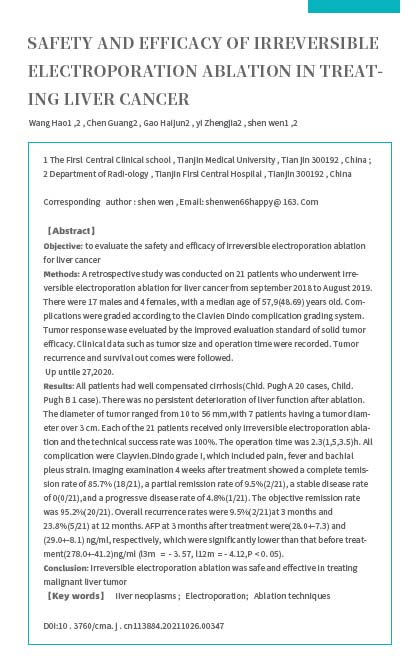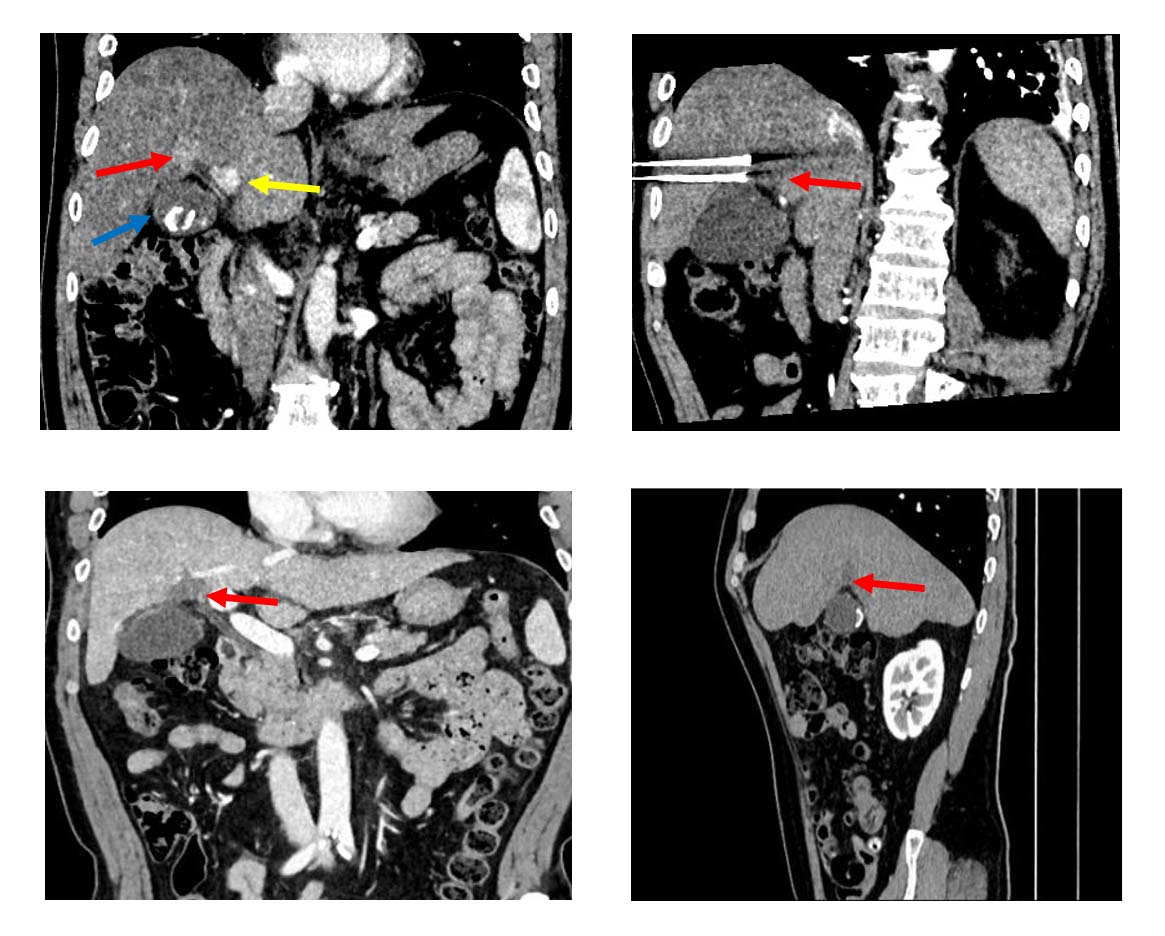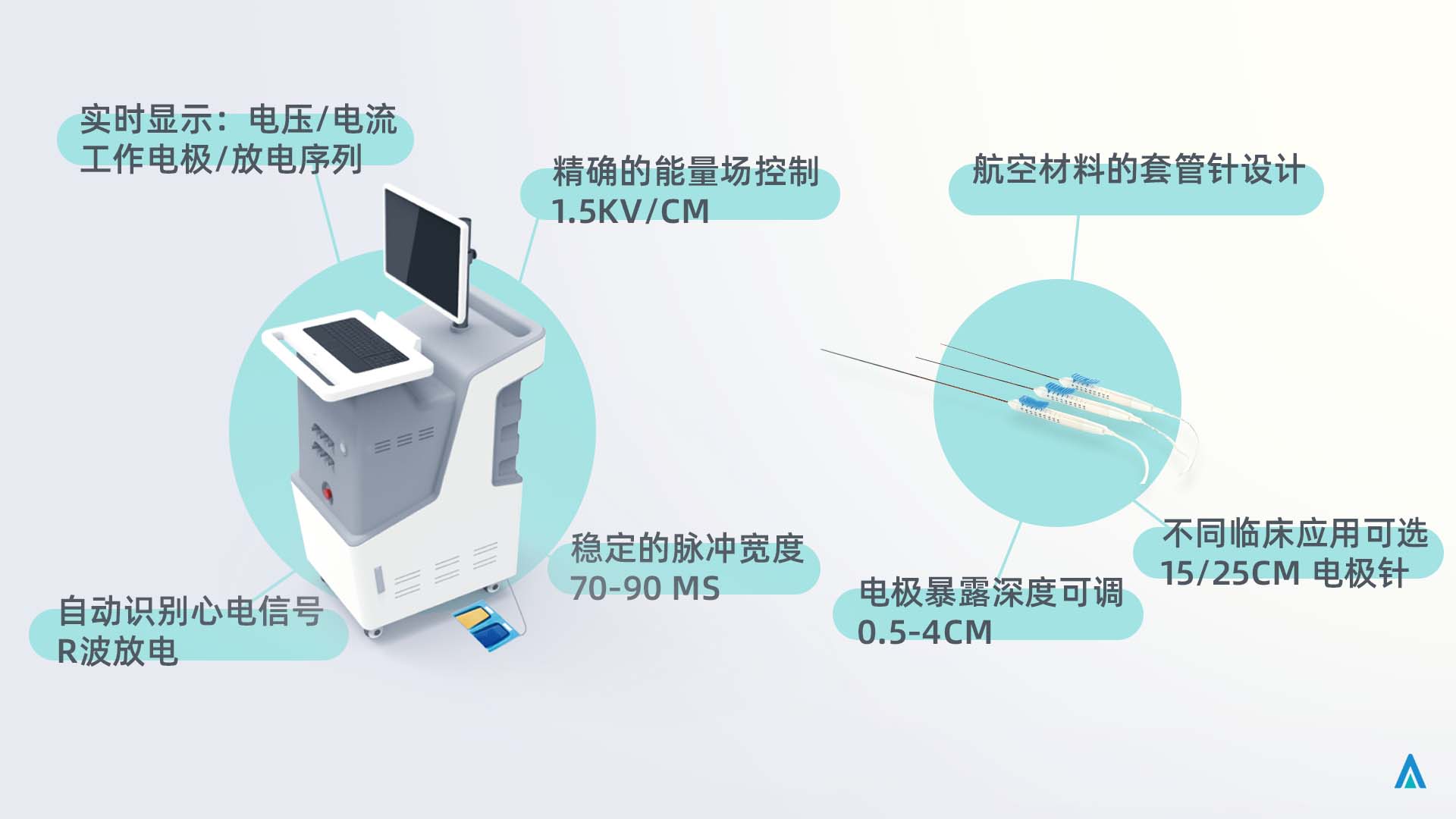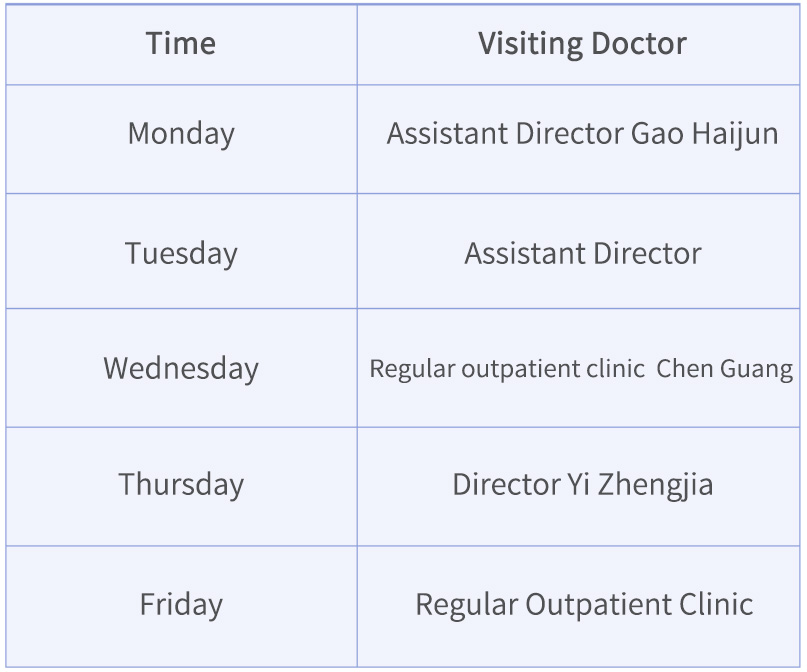

Preface
Hepatocellular carcinoma has always ranked among the top three leading causes of death from malignant tumors. For early-stage liver cell carcinoma and some metastatic liver cancer that cannot be surgically removed, conventional temperature ablation relies on protein coagulation at extreme temperatures to kill tumor cells. However, for some tumors located near the gallbladder, hepatic portal vein, and major blood vessels, protecting these important structures nearby may result in incomplete treatment and high rates of in situ recurrence.
Irreversible electroporation (IRE) technology uses pulsed waves generated under specific field strength to break the lipid bilayer of tumor cell membranes, forming pores on the cell membrane and disrupting the steady state of large molecules inside and outside the cells, thereby inducing apoptosis. It is a non-thermal tissue-targeted ablation technology, and under the field strength used for tumor treatment, the pulsed waves do not damage important structures such as major blood vessels or the gallbladder, making the treatment more thorough. Here we share a literature titled Safety and efficacy of irreversible electroporation ablation in treating liver cancer, authored by Dr. Chen Guang and Professor Wang Hao's team from the Department of Radiology and Interventional at Tianjin First Central Hospital, which took three years to write and was published in the issue two of 28th of the 2022 Chinese Journal of Hepatobiliary Surgery. The equipment used was the High Voltage Steep Pulse Minimally Invasive Therapeutic System independently developed by Alpmed.

Abstract
Objective:To evaluate the safety and efficacy of irreversible electroporation ablation for liver cancer
Methods:A retrospective study was conducted on 21 patients who underwent irreversible electroporation ablation for liver cancer from September 2018 to August 2019. There were 17 males and 4 females, with a median age of 57.9 (48, 69) years old. Complications were graded according to the Clavien Dindo complication grading system. Tumor response was evaluated by the improved evaluation standard of solid tumor efficacy. Clinical data such as tumor size and operation time were recorded. Tumor recurrence and survival outcomes were followed-up until August 27, 2020.
Results:All patients had well-compensated cirrhosis (Child-Pugh A 20 cases, Child-Pugh B 1 case). There was no persistent deterioration of liver function after ablation. The diameter of tumor ranged from 10 to 56 mm, with 7 patients having a tumor diameter over 3 cm. Each of the 21 patients received only once irreversible electroporation ablation and the technical success rate was 100%. The operation time was 2.3 (1.5, 3.5) h. All complications were Clavien Dindo grade Ⅰ, which included pain, fever and brachial plexus strain. Imaging examination 4 weeks after treatment showed a complete remission rate of 85.7% (18/21), a partial remission rate of 9.5% (2/21), a stable disease rate of 0(0/21), and a progressive disease rate of 4.8% (1/21). The objective remission rate was 95.2% (20/21). Overall recurrence rates were 9.5% (2/21) at 3 months and 23.8% (5/21) at 12 months. AFP at 3 and 12 months after treatment were (28.0±7.3) and (29.0±8.1) ng/ml, respectively, which were significantly lower than that before treatment (278.0±41.2) ng/ml ( t3m=-3.57, t12m=-4.12, P<0.05).
Cases:

A: A round-shaped lesion (red arrow) can be observed in the right lobe of the liver, adjacent to the portal vein (yellow arrow) and gallbladder (blue arrow).
B: During the operation, two electrocautery probes were used to form a parallel array around the tumor, with a needle spacing of about 2 cm. The ablation range covered the lesion (indicated by the red arrow).
C: One month after the operation, the ablation zone completely covered the lesion, and enhanced CT scanning showed no enhancement in the area of the original lesion (indicated by the red arrow).
D: Three months after the operation, there was no enhancement in the ablation zone, and the ablation zone had shrunk (indicated by the red arrow).
Conclusion:Irreversible electroporation ablation was safe and effective in treating malignant liver tumors


|
Dr. Chen Guang Director/Chief Physician of the Interventional Center. · Graduated from the Medical Imaging program at Tianjin Medical University in 1994. · In 1997, he went to Malmo General Hospital affiliated with Lund University in Sweden for a study in interventional radiology. · Having engaged in interventional work for more than three decades, he is proficient in abdominal imaging diagnosis and interventional radiology. His expertise covers a wide range of fields, including tumors, peripheral vessels, hepatobiliary system, gastrointestinal tract, and genitourinary system. · Having published more than 50 papers in SCI, Chinese and core journals, and has participated in the completion of 1 National Natural Science Foundation project, 3 national "Ninth Five-Year" key research projects. As the principal investigator, he has completed 2 Tianjin scientific research achievements, and introduced 3 new technologies. · Serving as the Vice Chairman of the Tianjin Interventional Medicine Association, the Vice Chairman of the Interventional Medicine Branch of the Tianjin Association of Traditional Chinese and Western Medicine, and the Vice Chairman of the Interventional Physician Branch of the Tianjin Medical Association, among other social positions. |

|
Wang Hao Medical Doctor/Associate Chief Physician · Engaged in radiological intervention therapy for more than 10 years, proficient in minimally invasive interventional treatment of postoperative vascular and biliary complications after liver transplantation, digestive tract bleeding and refractory ascites in liver cirrhosis, benign and malignant liver tumors, obstructive jaundice, liver and kidney cysts, liver and kidney abscesses, dialysis access stenosis or occlusion, and other diseases. · I also serve as a youth member of the Professional Committee of Tumor Interventional Study of the Chinese Anti-Cancer Association, and a member of the Interventional Physicians Branch of the Tianjin Medical Association. · A youth member of the Peripheral Vascular Professional Committee of the Tianjin Association of Integrated Chinese and Western Medicine, and a member of the Vascular and Intravascular Professional Committee of the Tianjin Medical and Health Association. · A member of the Vascular Malformations and Vascular Access Professional Committee of China Health Promotion Association for Body Science and Technology. Participated in 3 bureau-level research projects. Published over 30 papers, including 17 as first author, and 2 in SCI journals. |

|
Gao Haijun Deputy Chief Physician. · Engaging in interventional work for more than 10 years, proficient in minimally invasive treatment of peripheral vascular and oncologic diseases, digestive tract bleeding caused by liver cirrhosis, benign and malignant tumors of the liver, obstructive jaundice, cysts and abscesses of the liver and kidneys, dialysis access, post-liver transplantation vascular and biliary complications, and other interventional treatments. · Publishing more than 40 papers in SCI, Chinese, and core journals. As the first author, he/she has completed 1 scientific research project in Tianjin and introduced 2 new technologies. He/She also has 2 patents for inventions. · Member of the Interventional Medicine Society in Tianjin. · Member of the Interventional Medicine Branch of the Tianjin Integrated Traditional Chinese and Western Medicine Association. · Tianjin Physician Association participates in various social positions as committee members of the Physician Branch. |

|
Yi Zhengjia Attending physician · Graduated from the Medical Imaging and Nuclear Medicine program at China Medical University with a Master's degree in 2014. · Working in the Interventional Department of Tianjin First Central Hospital and have been engaged in interventional diagnosis and treatment. I have served as a resident physician, attending physician, and have remained in this position until now. · The main research directions include: interventional diagnosis and treatment of peripheral vascular and non-vascular diseases; infusion chemotherapy and chemoembolization for abdominal and pelvic tumors; interventional treatment during the perioperative period of liver transplantation; interventional treatment for peripheral vascular stenosis, malformation, aneurysm, and arteriovenous fistula; interventional treatment for gastrointestinal, pulmonary, liver, spleen, kidney and traumatic bleeding; in terms of interventional treatment for non-vascular diseases such as bile duct, gastrointestinal tract, liver, etc., there is in-depth research and rich clinical experience. |
The outpatient department of the Interventional Radiology Department at Tianjin First Central Hospital officially opened on January 4, 2022.
Time: Monday-Friday 8:00-12:00
Visiting Location: B First Floor cath lab

Diagnosis and treatment of diseases:benign and malignant liver tumors, portal hypertension due to liver cirrhosis, complications after liver transplantation, Budd-Chiari syndrome, emergency bleeding diseases (hemoptysis, hematemesis, melena, hematuria, etc.), liver/kidney/ovarian cysts, cholecystitis, liver abscess, pancreatic cancer, benign and malignant adrenal tumors, digestive/biliary strictures (esophageal stricture, intestinal obstruction, biliary obstruction, etc.), dialysis access, organ and tumor tissue biopsy, prostate hyperplasia, uterine fibroids and adenomyosis, vascular malformations, etc.